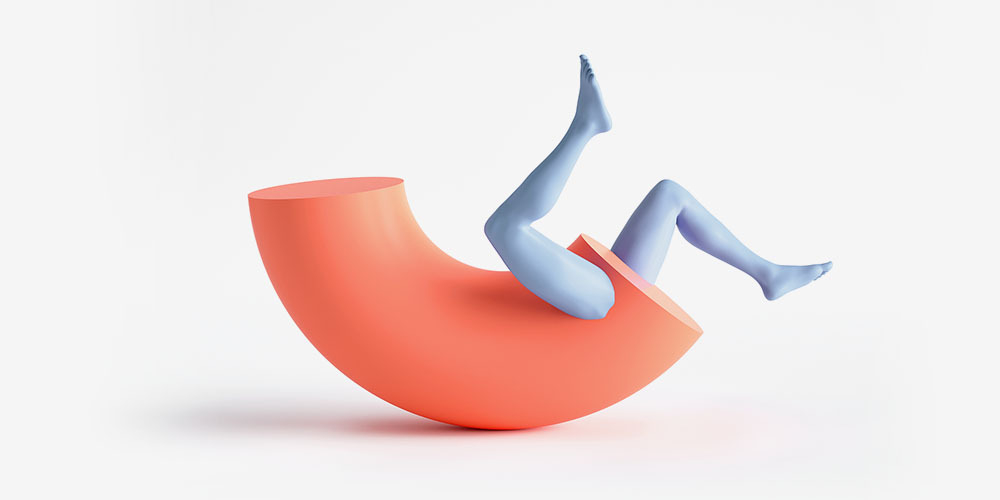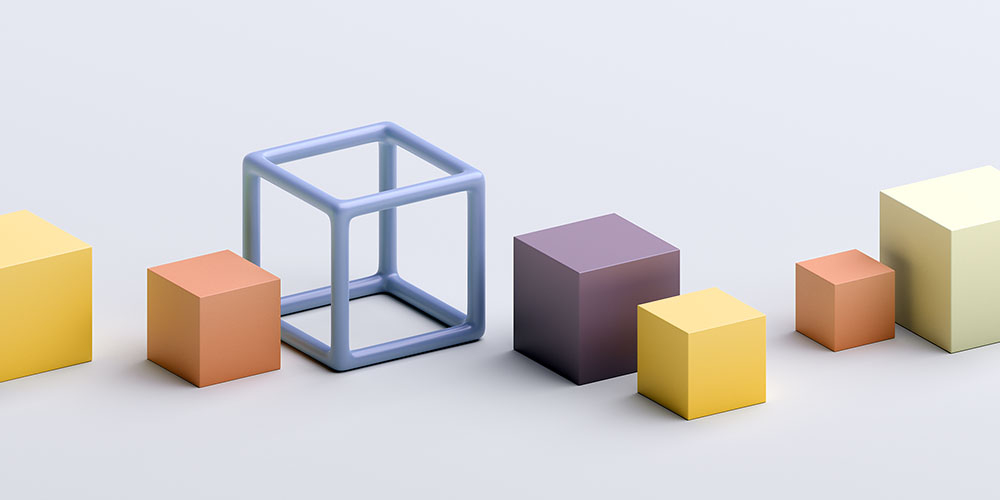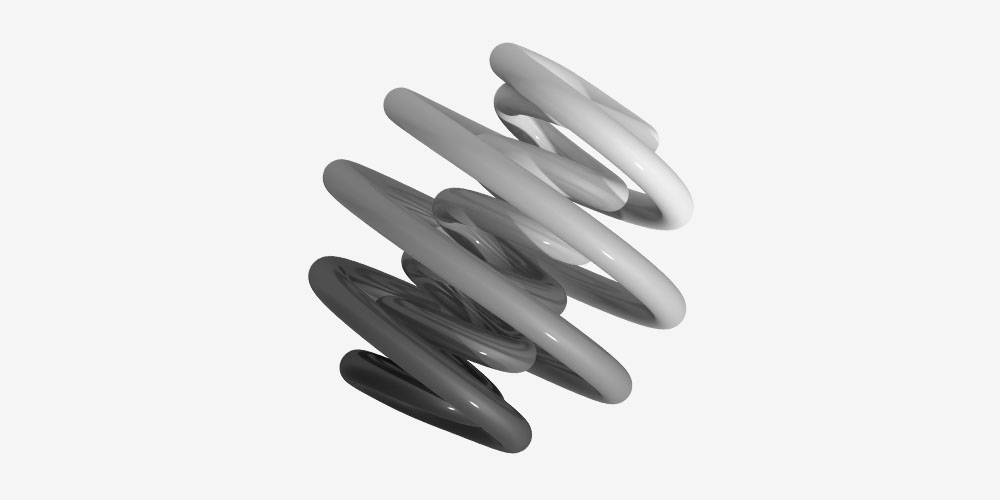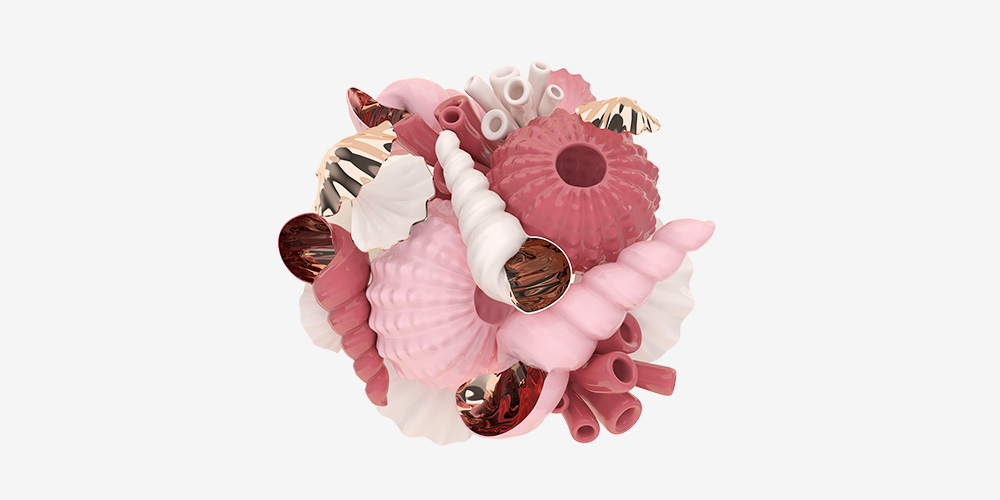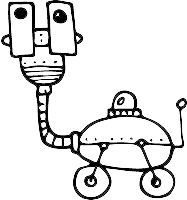SaaS products are boring. First, they’re seen as professional tools — predictable and reliable. On top of that, most founders apply the same marketing playbooks and trends, so everyone ends up doing similar things.
So when a software brand veers away from the cookie-cutter email style, you’ll take notice.
Since creative SaaS emails are basically unicorns, we had to search wider and deeper to put this collection together.
Don’t wait for the muse. Apply this step-by-step method to write high-performing email campaigns in hours, not weeks.
Not everyone can be fun, but creative and engaging is a must
For a highly technical industry like SaaS, it’s a bit challenging to find opportunities to be fun and creative.
But Asia Orangio thinks this shouldn’t give you the excuse to be ‘boring’:
“Just because you’re in an industry that isn’t sexy, it doesn’t give you leeway to be boring. That’s the worst thing you can do. You can have fun and do beautiful wonderful things that you’re proud of, even if you’re in this ‘boring’ industry.”
While not everyone can be the fun brand (which is fine), you can find ways to be creative and engaging.
“For example, reports are usually boring. But you can do a report about a fun and engaging topic.”
Even when SaaS brands do get creative, still hold back on. Our founder Jane Portman shares:
“We conclude that SaaS brands are decidedly uncreative. And when they get creative, they do that in safe ways. So there’s still great potential for you to send some outstanding, eye-popping, breathtaking, and trend-setting emails.”
How exactly to get creative with your emails
Use creative layouts
Using catchy illustrations in a short email format makes readers curious, pushing them to find out more.
Apple did just that with their email for the 2025 edition of the Worldwide Developers Conference.
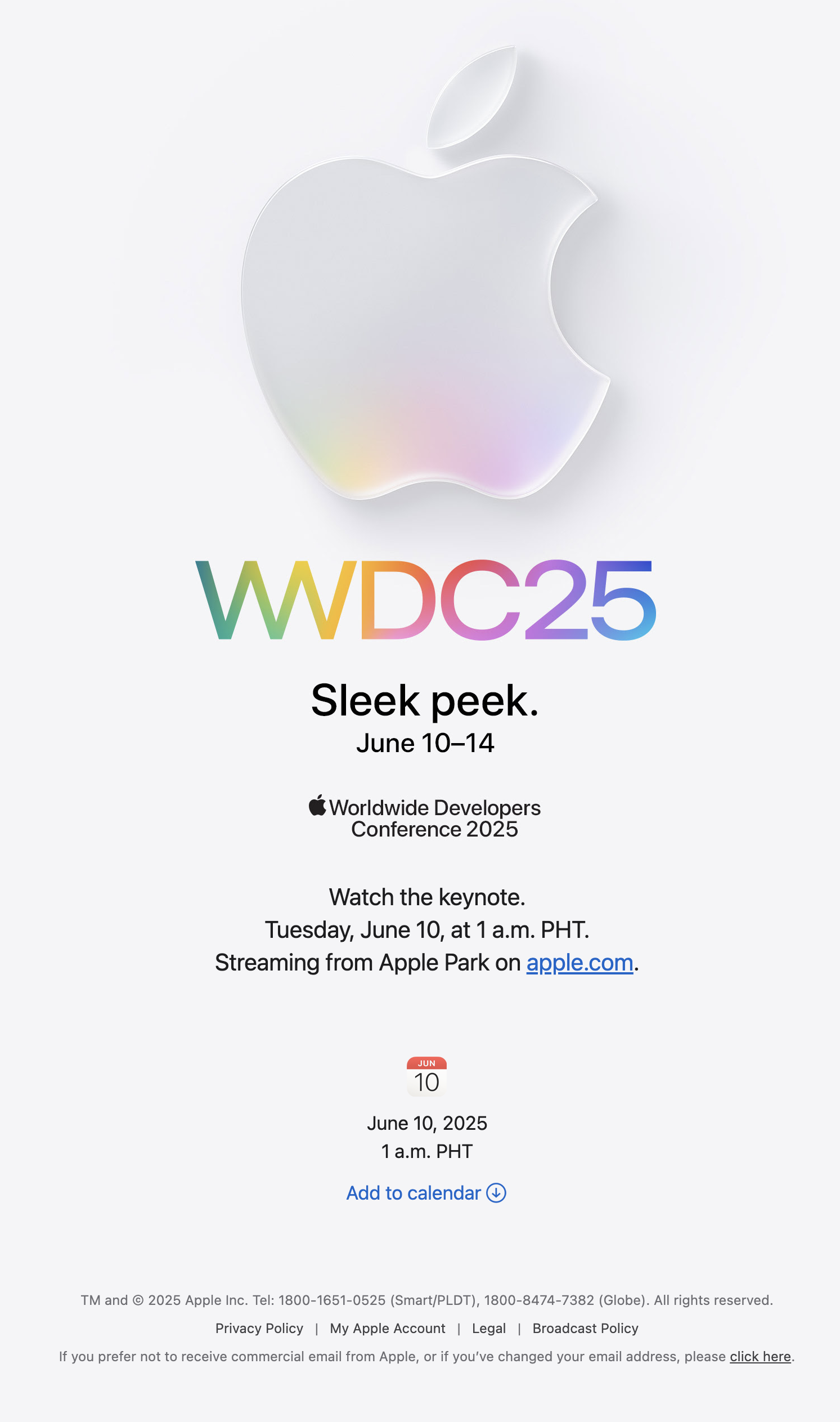
Get creative with the UX
Play around with the email UX to keep readers engaged. You can do this by pointing out that something is missing, intentionally inserting links leading to strange places, and more.
Publer did this for their email about a blank page syndrome cure.
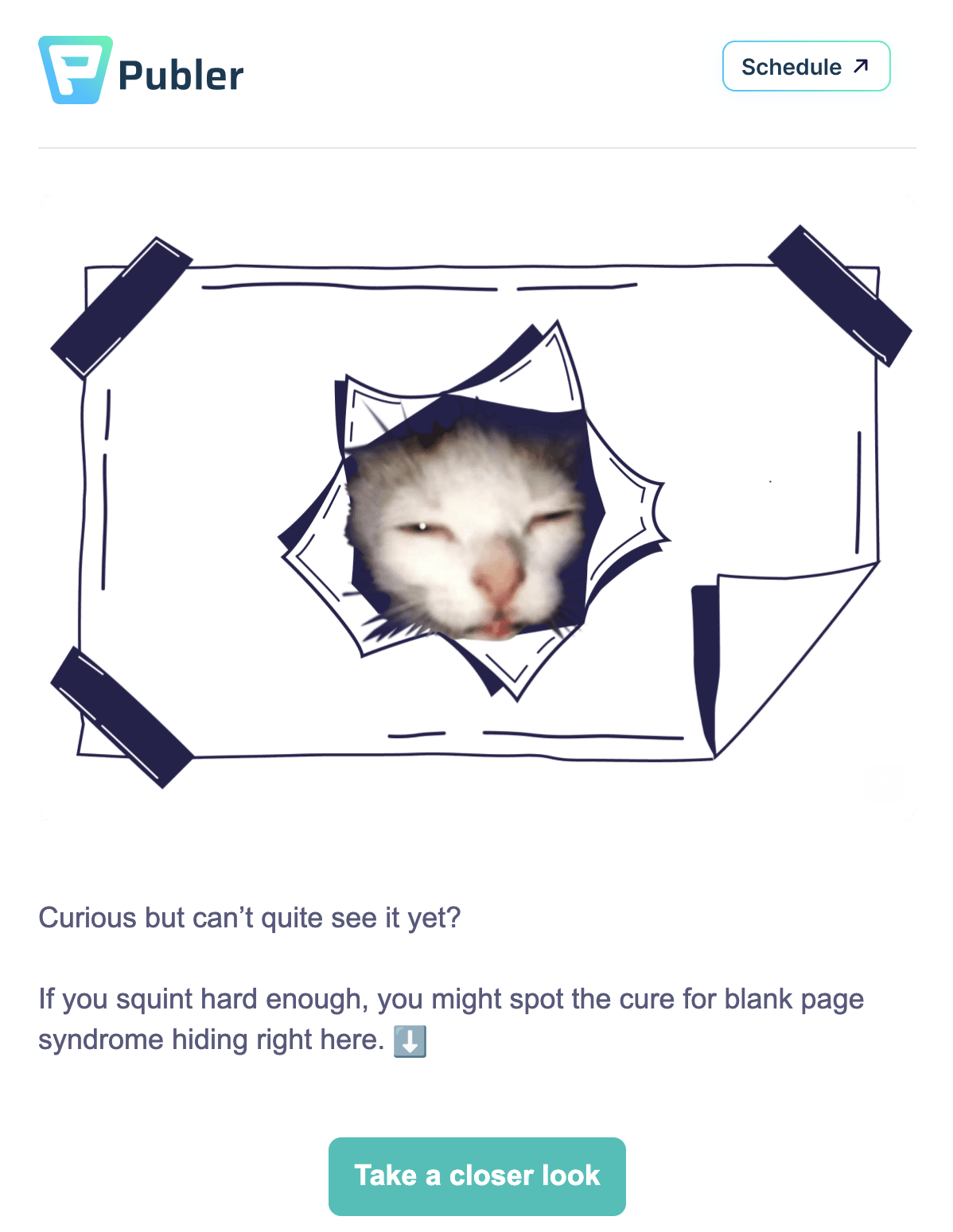
Use creative, bold, or shocking copy
Hook readers by using creative, bold, or shocking copy in the subject line and/or the main email body.
Koala did this with one of their feature announcement emails by using “Holy sh*t, this is awesome.” as the subject line.
Lean into lifestyle
You created your product to solve a pain point, so lean into that and remind users how it can be used for real life situations.
For one of their newsletters, Todoist listed down how their tool can help reduce daily stress at work.

Use trends in music, politics, etc
Using trends helps keep your brand relevant and strengthens your connection with your audience.
Spotify leveraged the growing global popularity of KPop for one of their campaigns.
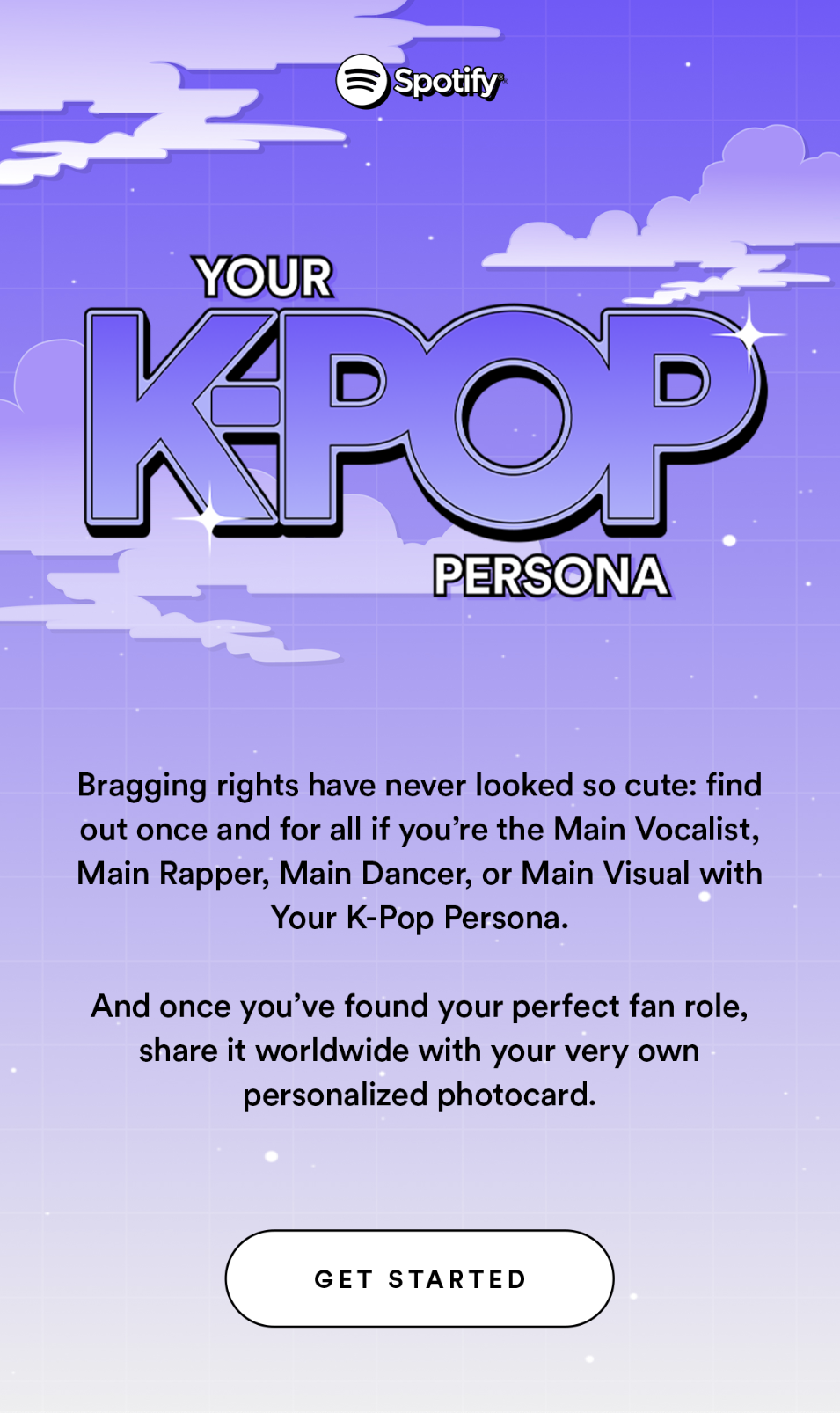
Be artistic or exceptional in your craft
Anyone can appreciate fine crafted work, so why not showcase it in your emails?
Adobe used a GIF to demonstrate how their product can animate illustrations.
Where can you get inspiration for email content?
- Watch top YouTube, Instagram, and TikTok content creators outside of the tech industry. See someone squeezing objects under a hydraulic press or doing a timelapse of a moldy burger? Think about the equivalent of that in your field.
- Dig into archives in art, history, and literature. As a bonus, you might also find free public materials to use for your email.
- Dig into your own strong sides and where your company shines. Exaggerate these to the extremes
- Hire someone with a good sense of humor. Don’t try to do this yourself if humor is not your thing.
Don’t wait for the muse. Apply this step-by-step method to write high-performing email campaigns in hours, not weeks.
Creative SaaS email examples
#1. Publer: humor and storytelling
Subject: [subject contains the real cure for blank page syndrome]

Publer’s subject line promises a real cure for blank page syndrome. The email body shows a cat meme that mimics the reader squinting at the screen to find the cure for blank page syndrome.
Since no answer will actually be found on the email body, the CTA tells the reader to take a closer look to find it. The CTA button redirects to this page:
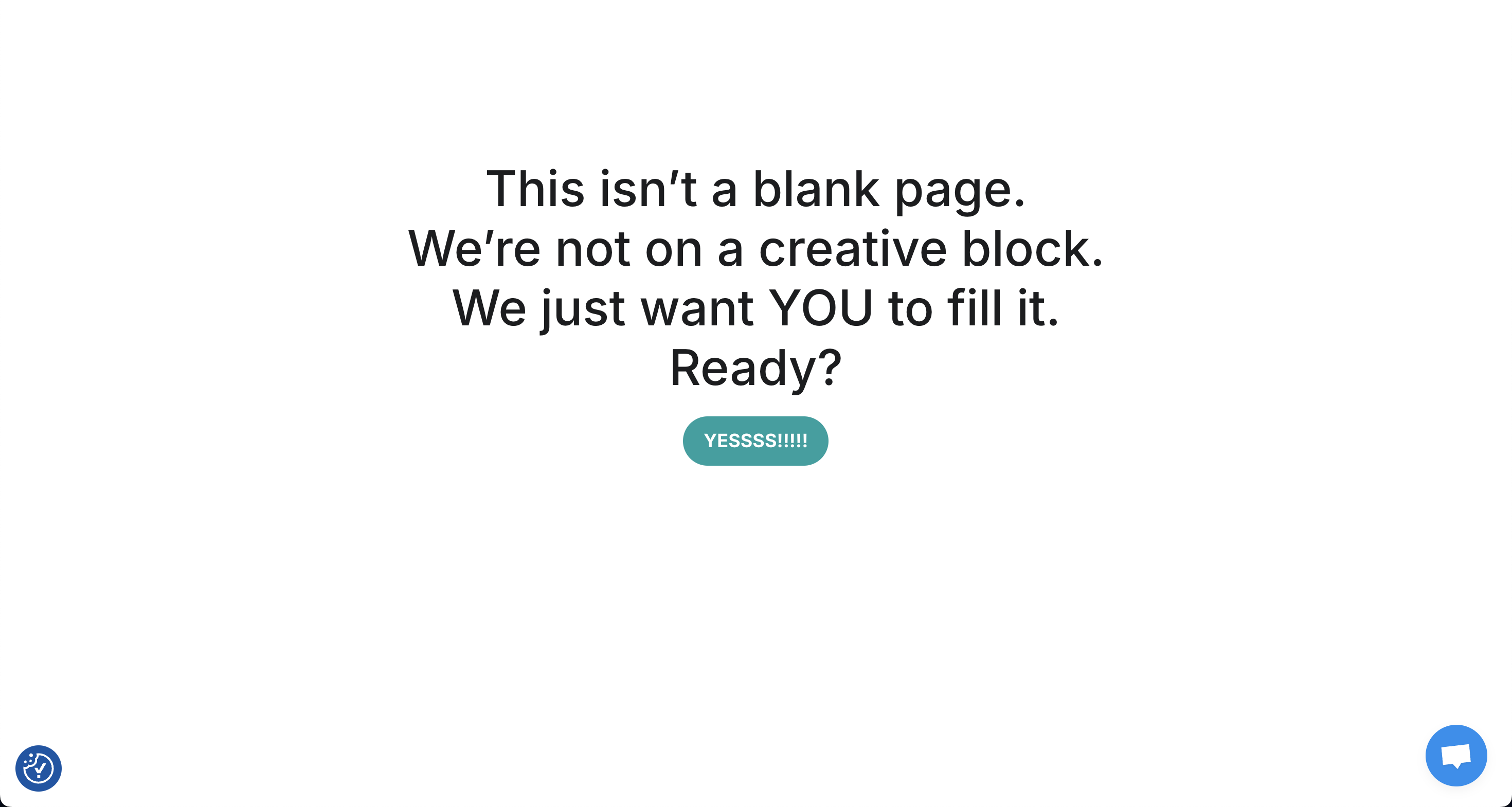
Meanwhile, here’s what they did for one of their feature announcement emails.
Subject: Move Over Batman & Robin, Meet Another Unstoppable Duo! 📖

Instead of just listing what their AI assist feature can do, Publer uses comic book style to show it in action. The creative storytelling and visuals keep you reading even though it’s a long email.
#2. Virtual Soul: emotional vulnerability and dark humor
Subject: Stay Close Forever: Keep Connected with Loved Ones, Even After Life
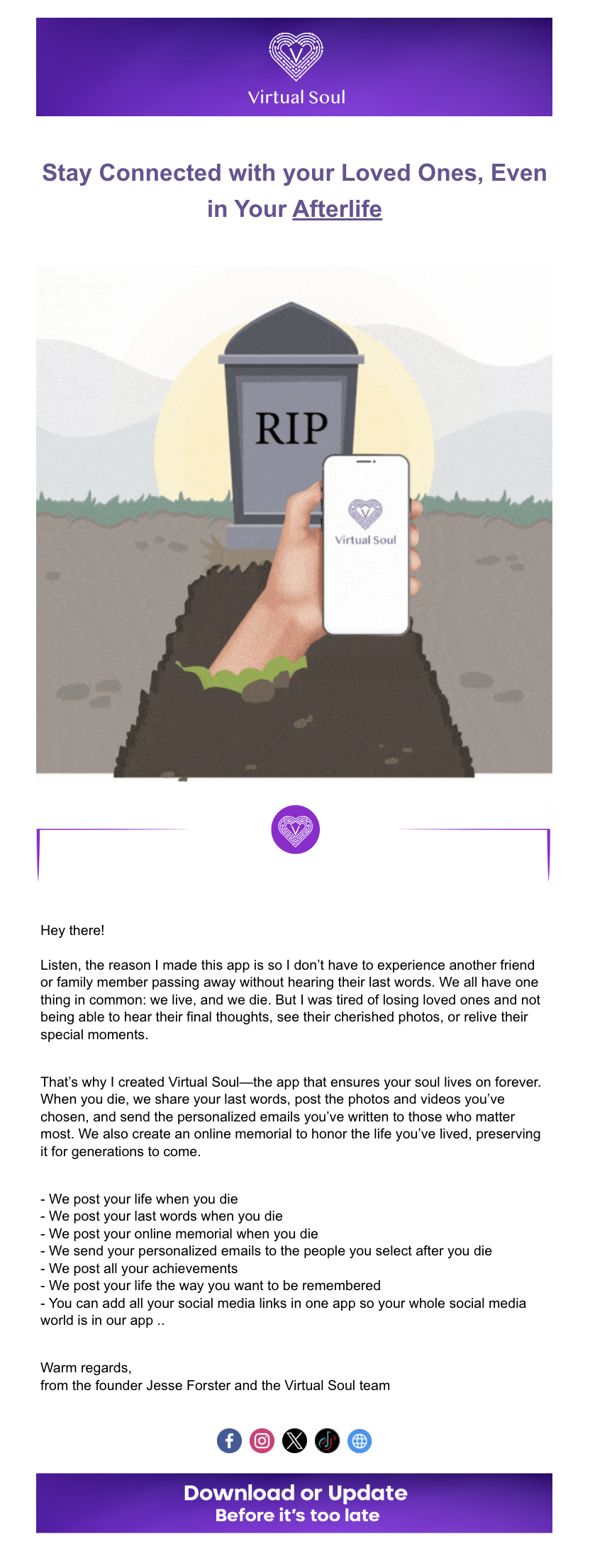
Virtual Soul’s email shows emotional vulnerability by openly talking about death and legacy. They share how this became the motivation for creating the app that preserves people’s digital legacy. They end the email with dark humor to get the reader to download/update the app on their device.
#3. Duolingo: consistently fun; occasionally cheeky
Subject: You made Duo sad 😢
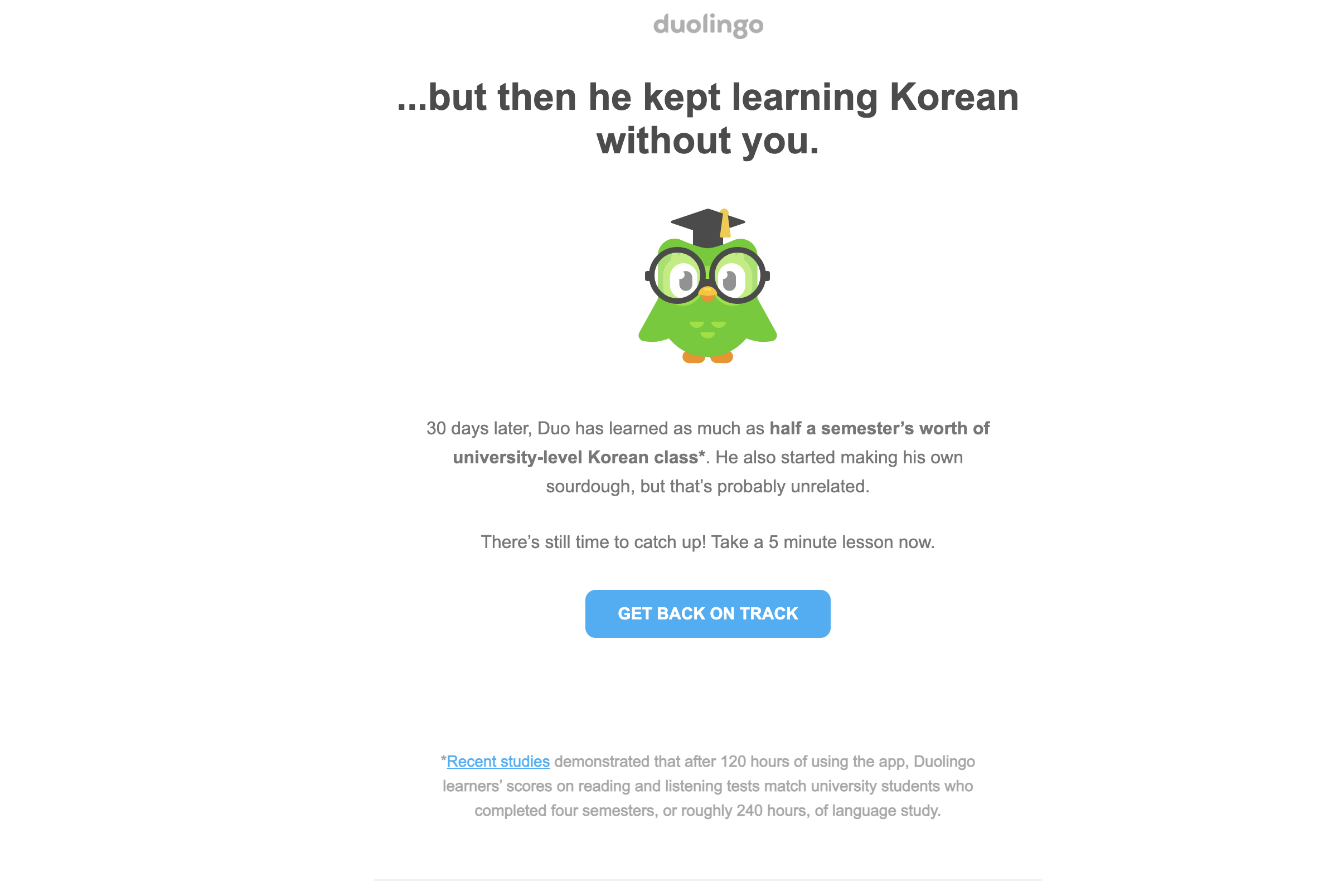
Duolingo is known for being funny, cheeky, and sometimes unhinged.
Their subject line hooks the reader by saying Duo becomes sad when you miss a day of learning. They induce FOMO by comparing 30 days of continuous Duolingo learning as equivalent to half a semester’s worth of a university-level Korean language class.
Duolingo also jokes that Duo also learned to make sourdough, hinting that if their mascot can be super productive, so can you.
Meanwhile, here’s their email for their 10-year anniversary:
Subject: EXCLUSIVE: Embarrassing photos of Duo inside 😈

Their subject line instantly catches your attention, mentioning that the email contains embarrassing photos of Duo. Duolingo uses Duo’s life story to make their company milestones feel more personal and fun.
#4. Apple: minimalist and sleek
Subject: See you next week.

Much like their brand and conference theme, Apple went with a brief and beautifully designed email invitation for the 2025 Worldwide Developers Conference. By sharing only the basic event details, they make users curious enough to tune in.
#5. Spotify: leaning into KPop’s growing global popularity
Subject line: Discover Your K-Pop Persona

With the rising popularity of KPop, Spotify did a campaign specifically for fans of the music genre. This email talks about their fun quiz to help users find out their Kpop group position once and for all.
#6. Salesforce: brilliant wordplay
Thanks to Matt Helbig of Really Good Emails for this example.
Subject: Is your data **cked up? Join us on April 17.
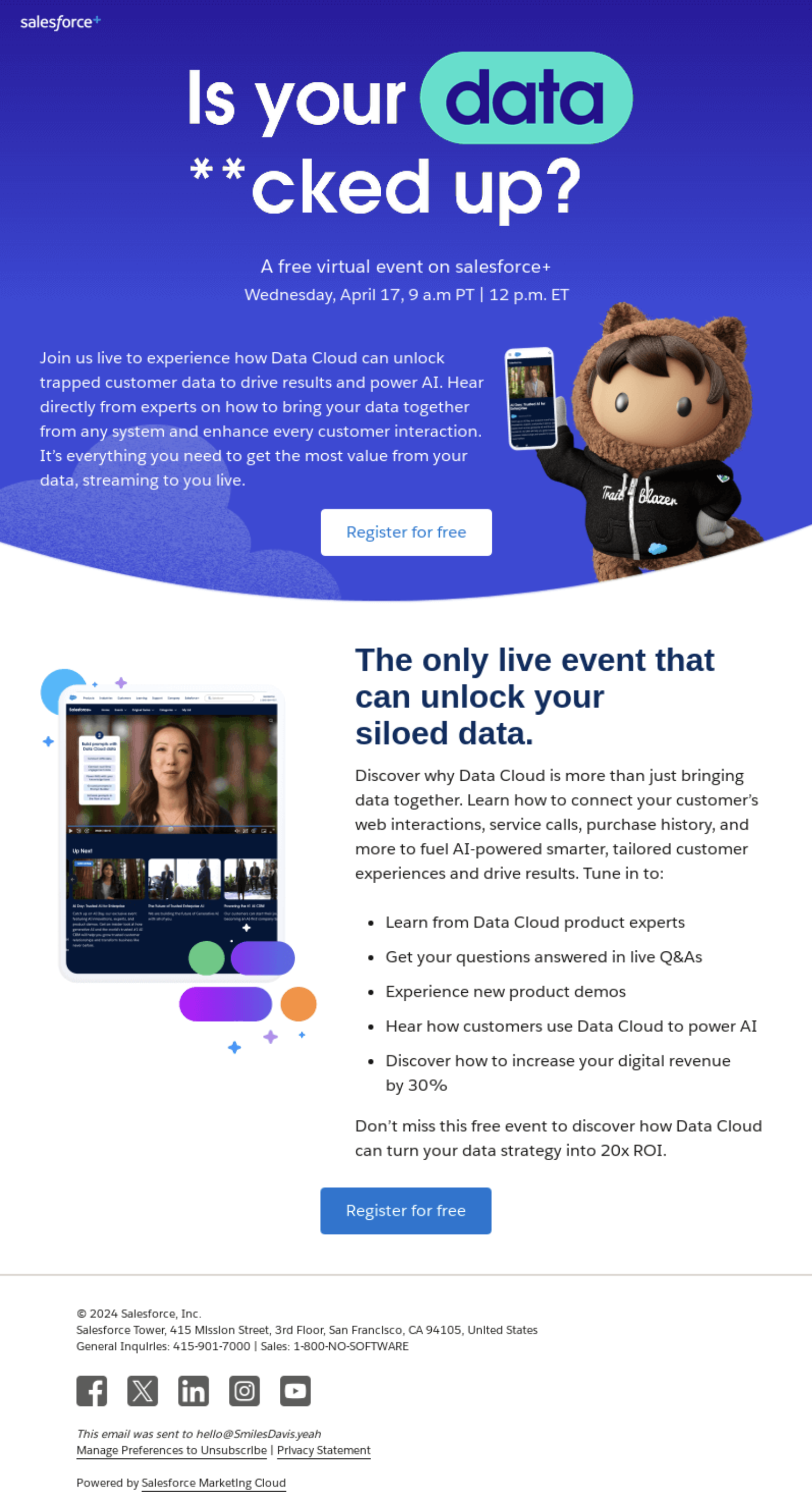
To make their email stand out of the inbox, Salesforce used a censored swearword for their subject line.
But when you read about unlocking data during their live event, you’ll realize that “**cked up” actually means “locked up”, not the swearword.
#7. Koala: bold language
Subject line: “Holy sh*t, this is awesome.”
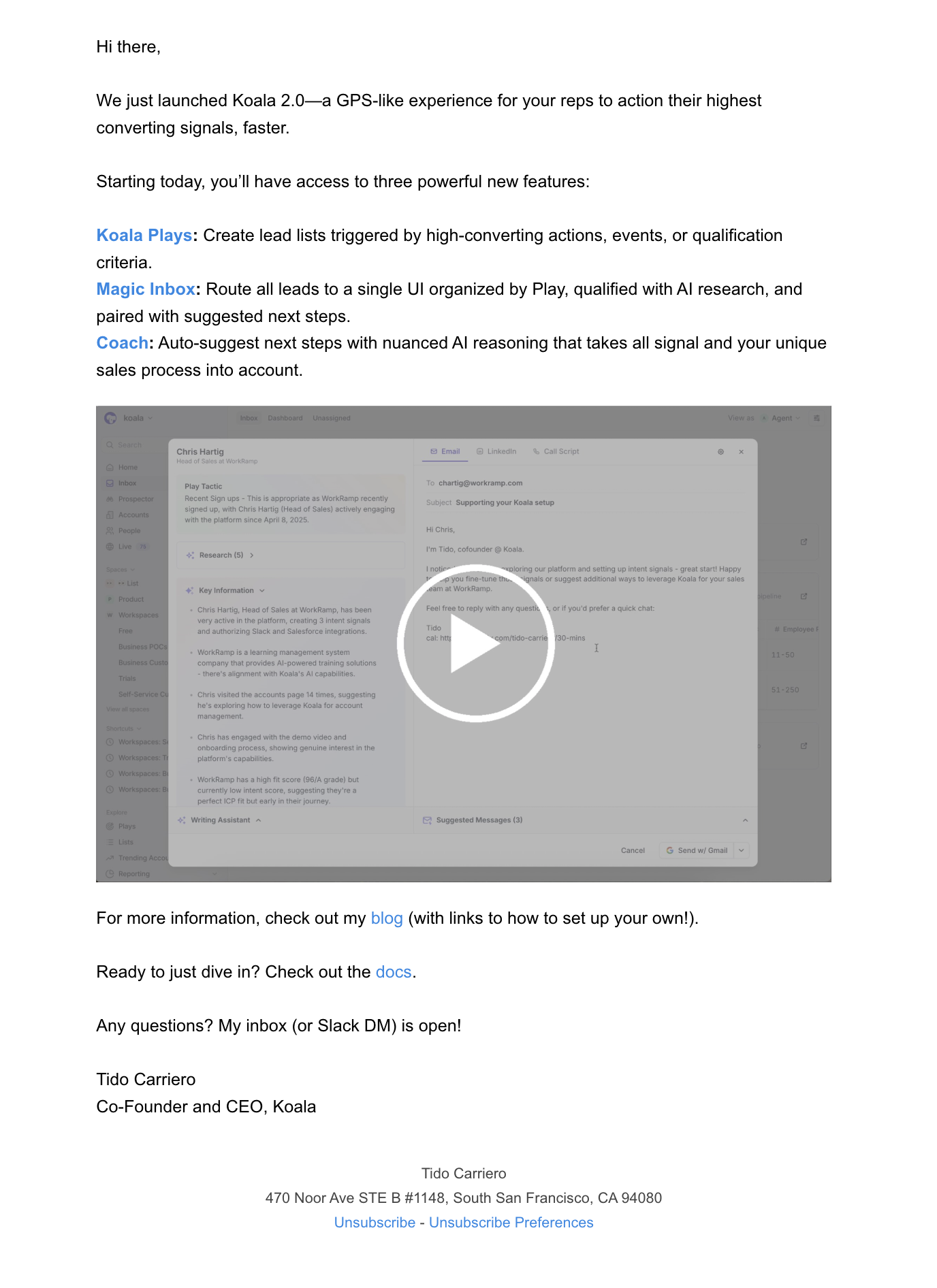
Koala uses bold language in their subject line to create shock value and catch the recipient’s attention. The email talks about the launch of Koala 2.0 and the three new powerful features available with this latest product version.
#8. Todoist: leaning into personal improvement
Thanks to Katarina Andrejevic of Opascope for this example.
Subject: Try these anti-stress Todoist workflows

Productivity is usually equated with grinding hard. But with the growing awareness about mental health, Todoist focuses on the equal importance of resting and setting boundaries.
To celebrate Mental Health Awareness Month, they shared task and team management tips in their newsletter to keep the healthy balance.
#9. Bitly: creative price anchoring
Thanks to Devin O’Toole of Bitly for this example.
Subject: [Gift Guide] 5 Things to Buy Instead of Bitly

Bitly sent out this holiday marketing email to creatively promote their one-year plan. For each gift idea, they talk about how their tool could save time and effort. But if the reader doesn’t want to buy a paid plan, they can buy the gift instead to relieve stress and save time, which is a funny way of showing their product value.
Meanwhile, here’s what they did for one of their plan upgrade emails.
Subject: Waffles?
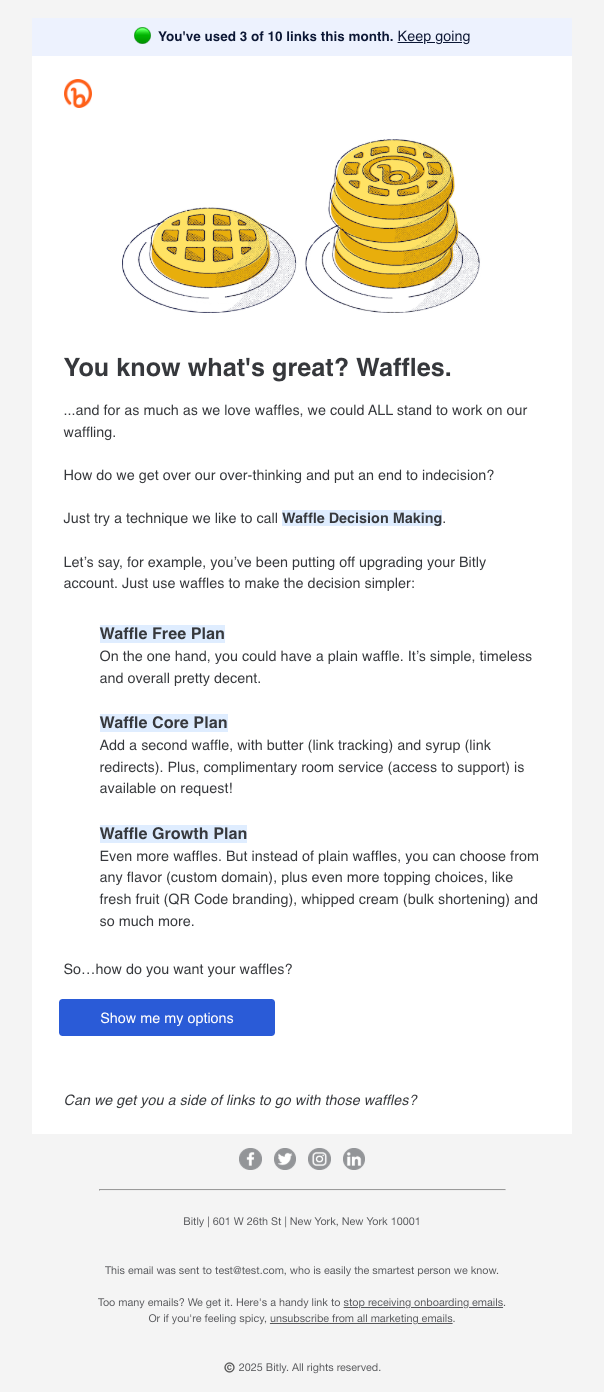
To help users overcome analysis paralysis about upgrading to a paid plan, Bitly illustrates the feature inclusions in the different tiers using waffles and add-ons.
#10. Havenly: building intrigue
Subject: Something new is coming to Havenly…
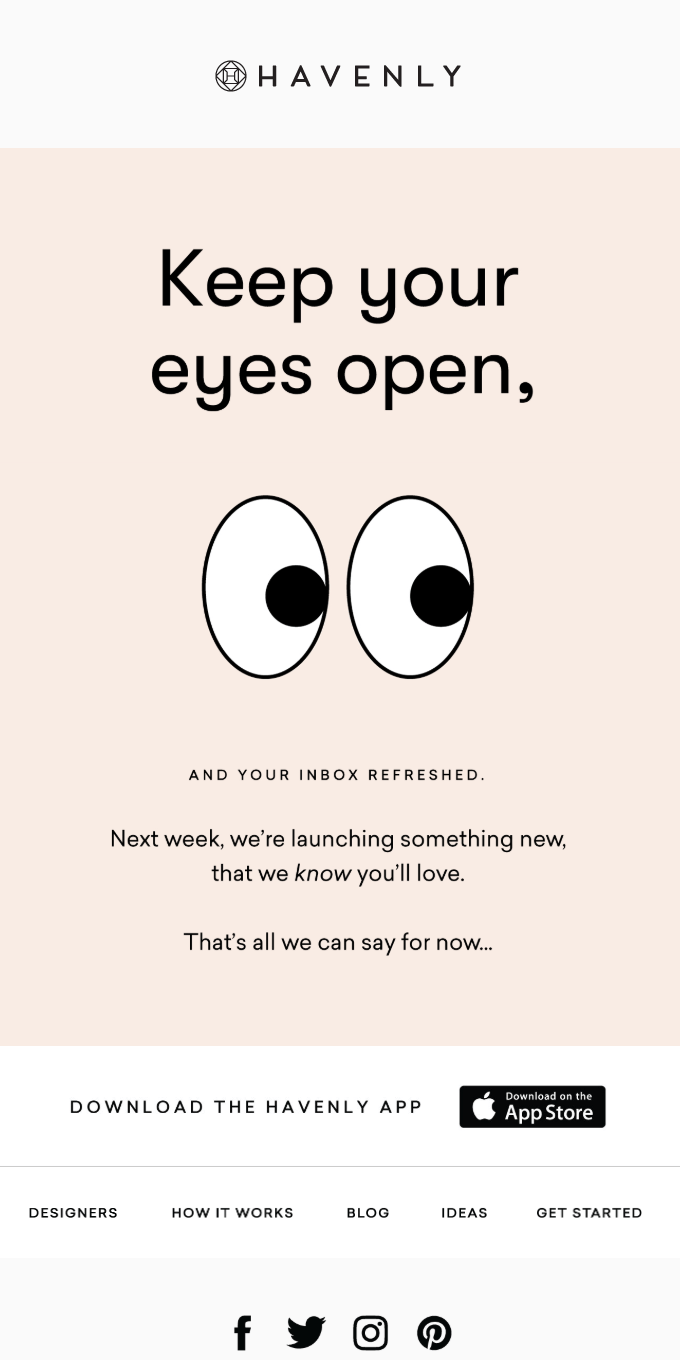
Havenly sent a teaser one week prior to one of their launches. Providing minimal details keeps the readers guessing and looking forward to the day of the launch.
#11. Adobe: not funny, just artistic
Subject: Create hypnotic animated illustrations with Creative Cloud
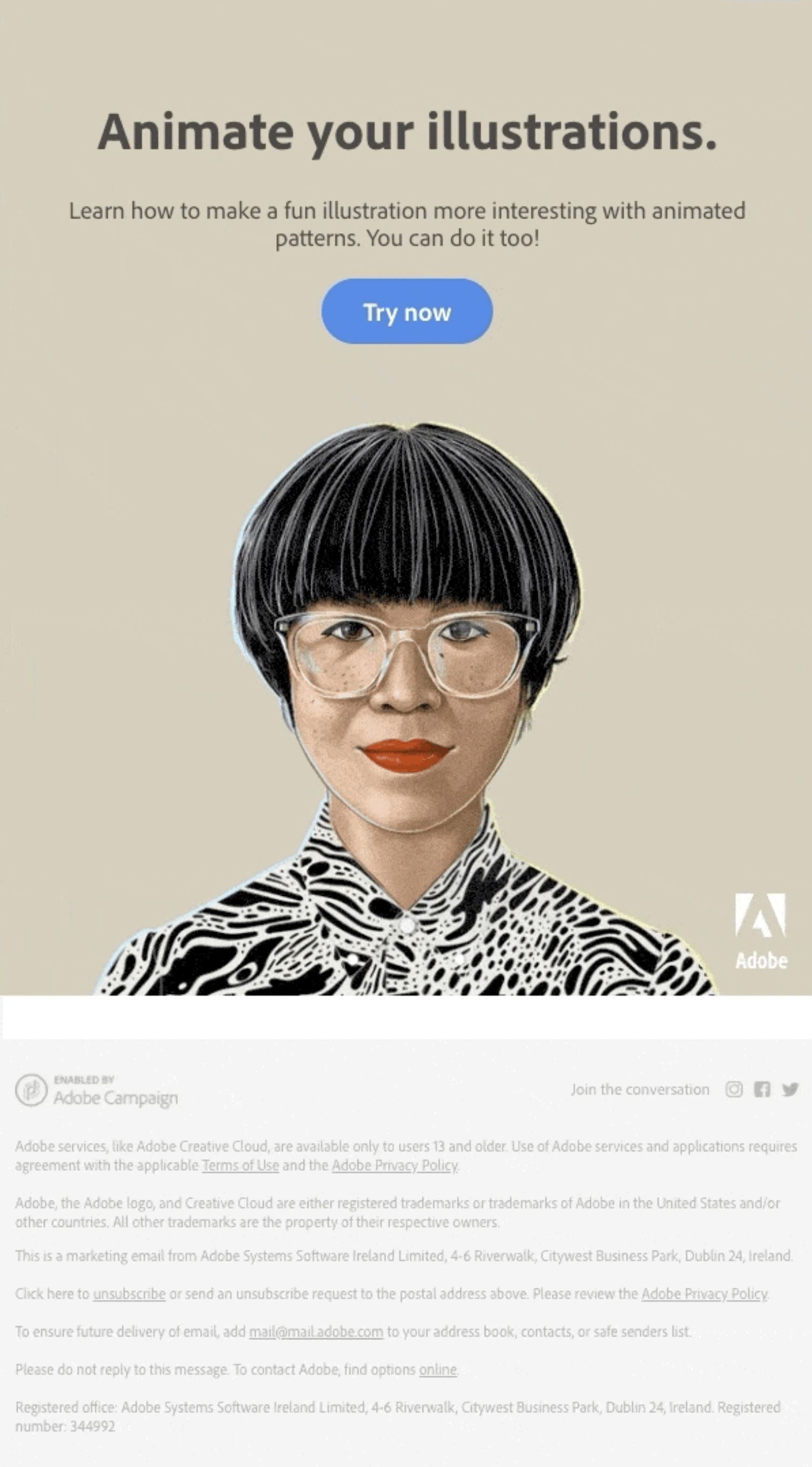
To convince readers to sign up for a Creative Cloud plan, Adobe leans into their artistic expertise by using a GIF in the email. The hypnotic GIF showcases how their tool can bring illustrations to life.
#12. Yohana: leaning into relatability
Subject: New year, same stress? Delegate your to-do list to us.

Yohana uses a GIF that shows how overwhelming household tasks can be, making readers feel seen instead of just telling us about the problem. They then talk about how their platform can help with these tasks.
The sky’s the limit
See how safe most of the examples are? There’s so much more you can do to break the mold of generic software emails. Take this opportunity to differentiate your brand from the rest.
Here are some other ways to stand out (follow the links to see our email collections):
- Send plain-text emails
- Add GIFs
- Use storytelling
- Address obstacles and anxieties
- Include case studies
Don’t miss out on new articles. Subscribe to our newsletter and get your monthly dose of SaaS email marketing insights.

